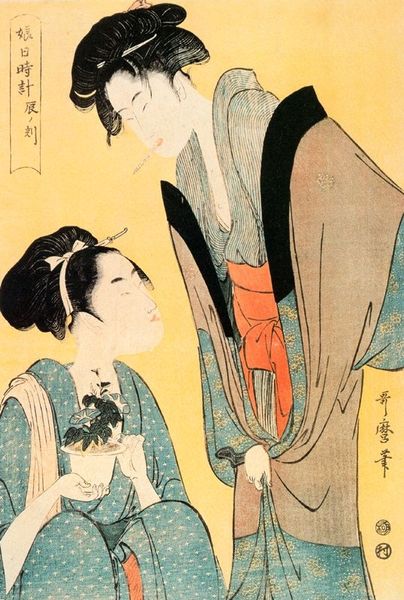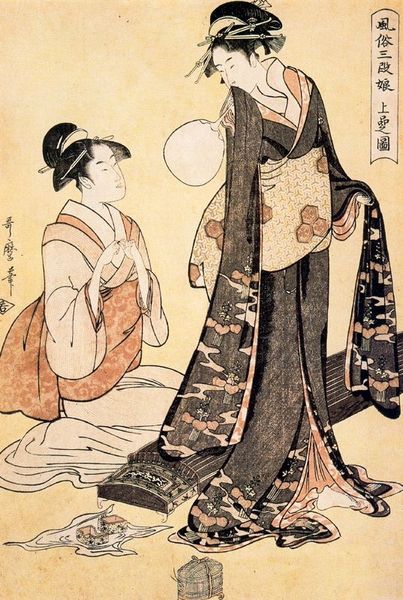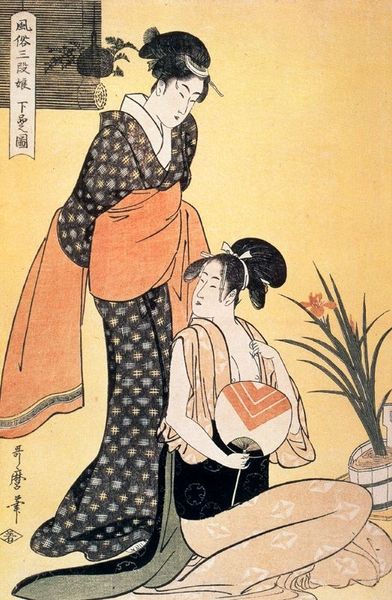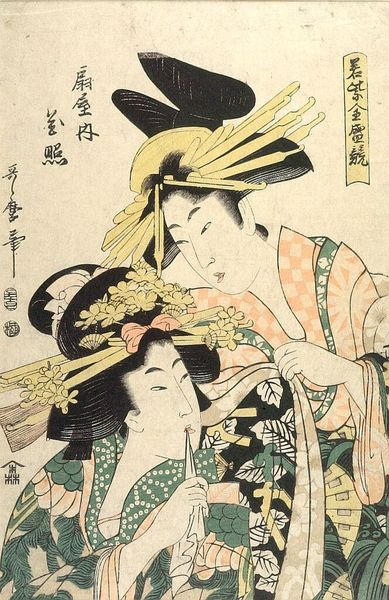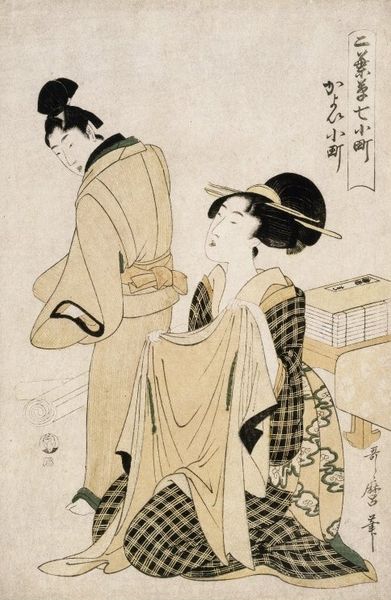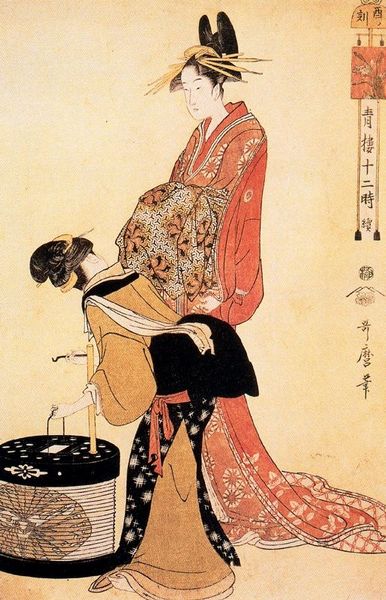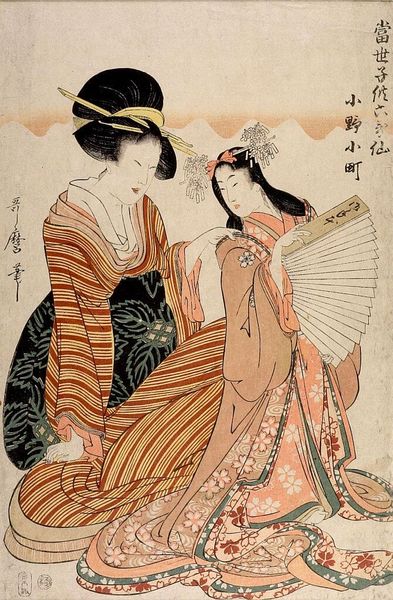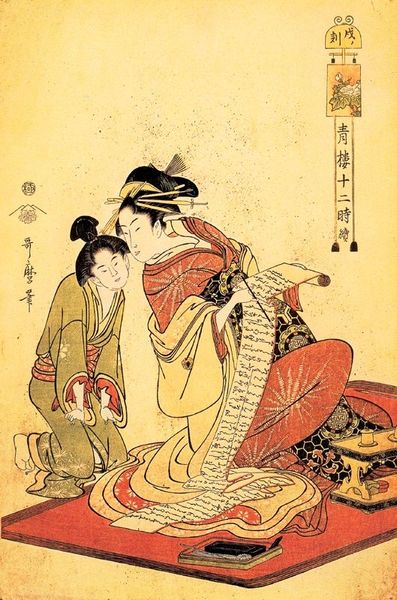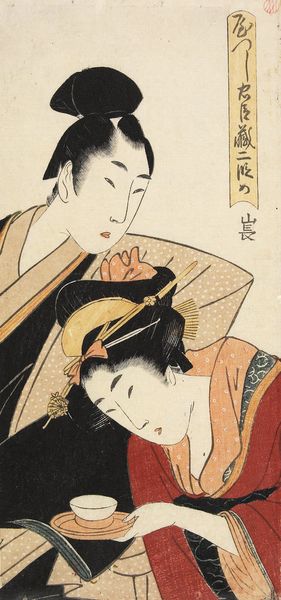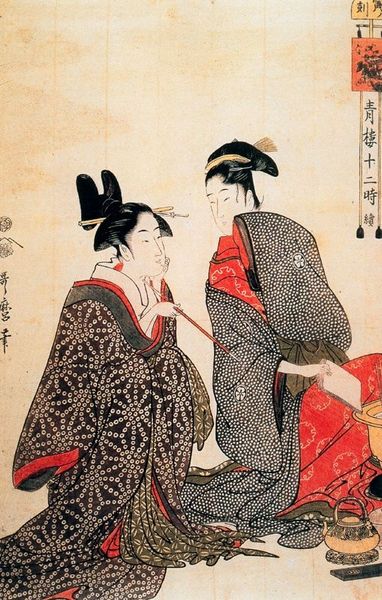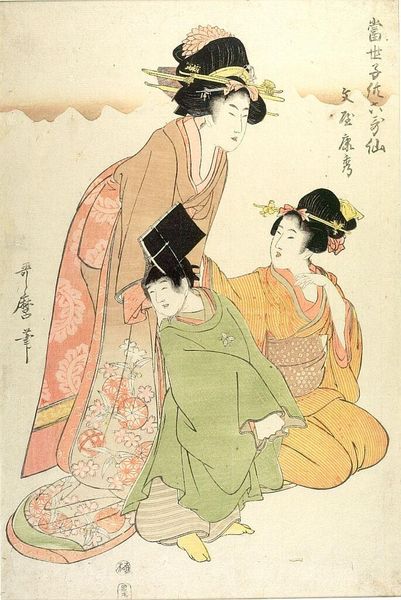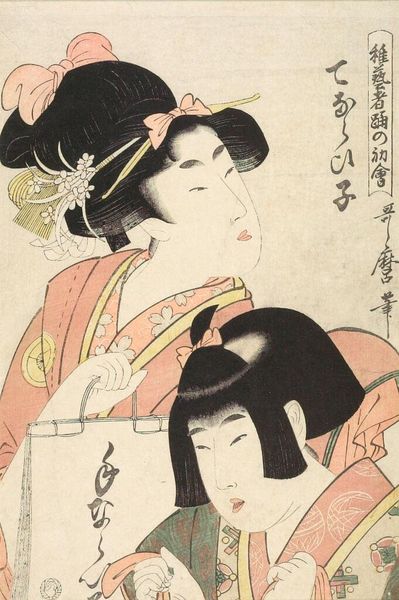
print, woodblock-print
#
portrait
# print
#
asian-art
#
caricature
#
ukiyo-e
#
woodblock-print
#
female-portraits
Copyright: Public domain
Curator: This intriguing print, "The Hour of the Tiger," is attributed to Kitagawa Utamaro and exemplifies the Ukiyo-e style. Editor: The subdued color palette projects such a quiet, intimate scene—it gives me pause to reflect on the interiority of these figures. There’s a sense of restrained emotion hovering around the work’s visual economy. Curator: Ukiyo-e, literally translated as "pictures of the floating world," often depicts scenes of everyday life and popular entertainment. The print uses the woodblock technique, a hallmark of the medium, and its female subjects typify Utamaro's oeuvre. Consider the stark lines that create such distinct separation of pictorial elements, contributing a simplified flattening of the subjects' dimensions and physiognomy. Editor: Exactly! I’m so glad you mentioned Utamaro's famous figuration, which speaks directly to an economy that both celebrated and circumscribed women to the space of interiority. "The Hour of the Tiger," often seen as associated with darkness, vulnerability, or transitional states, begs an exploration of how women navigate such vulnerability—for survival or agency. Are the women complicit in or resistant to the pressures exerted on them? Curator: It could also be argued that these women, perhaps geishas or courtesans, represent ideals of feminine beauty. The smooth, pale skin and elaborate hairstyles adhere to particular aesthetic values. Also, note the compositional balance between the seated figure and the standing one. This is so powerful given the fact that so few colors dominate the composition! Editor: Yet, by framing this only as the celebration of "ideal beauty," don’t we risk perpetuating and normalizing those aesthetic prescriptions? We have to also question those power dynamics, right? It is important to see the aesthetic values and, simultaneously, the commodification and labor—what choices are they able to exercise, how are those choices policed? Curator: It's a delicate balance between appreciating the artistry and questioning the historical context. However, my eye sees a very studied juxtaposition. Editor: Yes, Utamaro presents an exquisite visual. He also delivers an uncanny opportunity to look into the world and consider our social contracts!
Comments
No comments
Be the first to comment and join the conversation on the ultimate creative platform.
